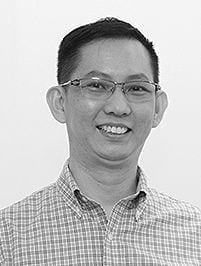Mark GAN
Centre for Development of Teaching and Learning (CDTL)
This post is an adapted version of the talk Mark shared as a panellist at the GRO-CDTL Regional Webinar Series in which the discussion focused on educators’ assessment options during challenging times.

When the NUS physical campus had to shut down due to the COVID-19 pandemic at around Weeks 11 and 12 of Semester 2, Academic Year 2019/20, there were about 2-3 weeks of lessons left before the final examinations. One challenge faculty members encountered was the preparation, as contingent measure, for online or remote assessments, while at the same time, recognising the need to keep them manageable and meaningful.
I learned three important lessons as an academic developer supporting colleagues deciding on their assessment options:
1. Rethink the purposes of assessment
As the final examinations loomed closer, we put in place a number of approaches to help colleagues familiarise with and use two available digital assessment tools—ExamSoft and LumiNUS. For example, Wiki quick guides were developed on take-home and online assessments and on promoting academic integrity and preventing academic dishonesty in online assessment. CDTL’s online professional development sessions were ramped up to work with colleagues on setting higher-order thinking assessment questions.
While these measures were useful, I realised that the challenge of transitioning to digital assessment could also be seen as an opportunity to rethink the purposes of what, how and why we carry out assessments, i.e. a key question to ask ourselves is this: Is our assessment fit-for-purpose? In other words, besides a summative purpose for assessment (e.g. obtaining a grade or score for overall student performance), are we considering other purposes, such as, promoting desirable learning by motivating students to persist and continue to learn even without final exams?
2. To carefully consider our assessment options
At the NUS e-Learning Symposium 2020, an analysis of students’ end-of-course feedback highlighted that overall satisfaction with modules had increased slightly as compared to previous semesters (Chan, 2020). To me, what stood out from the qualitative comments, was the students’ overall positive experience attributed to the choices for learning and flexible use of technology to enhance their learning experience. From the students’ perspective, care and support came first.
This learning point highlights the importance of being flexible when deciding on our assessment options (rather than being driven by technology) and to carefully consider assessment that will better support our students’ learning in the long term. Indeed, choices about assessment go beyond what works or does not work. Teaching, learning and assessment are complex processes which are deeply intertwined, and it is as much about the learner as it is about the teacher, and the need for both to work together.
3. Create opportunities for students’ involvement in assessment processes
A way forward, as articulated by Professor John Hattie, is to consider students’ role in the assessment process or more specifically, to actively involve students in assessment and feedback (Hattie, 2012). The key principle here is to see students as capable of being assessors and having the capacity to make informed judgements about their own and their peers’ learning. As we explore online assessment, we can leverage technology to enhance peer assessment and peer feedback processes. One way of doing this is to co-develop rubrics or evaluation criteria with students or getting students to formulate multiple-choice questions (MCQs) that could be curated into a question bank for ongoing quizzes and revision. For feedback, we can consider the use of multimedia tools to provide timely comments, such as getting students to provide audio/video feedback or annotated synchronous feedback.
As we continue to explore the different ways of assessing our students, I believe these three learning points can serve as conversation starters amongst our faculty (and with their students) to think more deeply about enhancing our assessment practices.
 |
Mark GAN is an Associate Director of the Centre for Development of Teaching and Learning (CDTL) in NUS. He has been involved in a wide variety of higher educational initiatives and programmes to enhance professional development of staff, such as courses for developing a Teaching Portfolio and writing of teaching inquiry grants. His research interests include feedback and assessment, and the impact of academic development work on teaching and learning. Mark has a PhD in Education from the University of Auckland, supervised by Professor John Hattie. Mark can be reached at mark.gan@nus.edu.sg. |
References
Chan T. Z. (2020). Students’ experiences and perceptions of transitioning to full e-learning during the COVID-19 pandemic [Blog post]. Retrieved from https://blog.nus.edu.sg/teachingconnections/2020/08/19/students-experiences-and-perceptions-of-transitioning-to-full-e-learning-during-the-covid-19-pandemic/.
Hattie, J (2012). Visible learning for teachers: maximizing impact on learning. London: Routledge.

